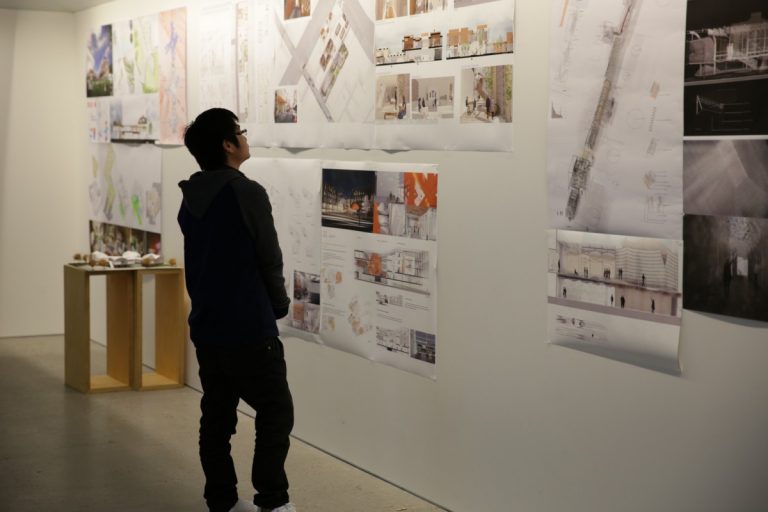
Imagine if you could shape the world around you – the form and curvature of the buildings, the contours of the greenery, the arrangement of streets and structures within bustling city centers. It’s a way of making your mark in the world and more broadly, history – just as the builders of old labored to erect majestic monuments to their civilization. This of course is the dream of architects and all those in the design industries.
They hunger to apply their creative spirit to the physical world, just like the ancient Egyptians did with the pyramids of Giza, and Gustave Eiffel did with the tower in Paris that bears his name. And why not? Architects and design graduates have long seen good salaries, excellent job prospects, and rapid career growth. And the opportunity to use the physical world as a personal and professional canvas is just too tempting for many to refuse.
There are a great many areas within the field of design, but the first and foremost is Architecture. The role of ‘architect’ has a long and illustrious history stretching back to the beginning of human civilization. After all, someone had to plan, design, and oversee the construction of buildings.
![]()
Image courtesy of Melbourne School of Design at the University of Melbourne
Today, architects are no less important in charting the course of contemporary societies. With the help of sophisticated programs, they use cutting-edge modelling and rendering techniques to give form to their vision. They are also adept at using advancements in construction to push the envelope of what’s possible, finding the right balance between function and form. If you wish to be the maestro of the physical world, then architecture is an easy choice.
But if the designing of buildings is an essential art, so is the management of people tasked with the building itself. That’s where a major in Construction becomes immensely useful since it concerns the management of people, processes, and materials and how they apply to specific building projects. In other words, architects plan, but construction specialists must implement and sort out the nuts and bolts of the project.
They decide, among other things, on how much building material to procure, and how many workers to hire and assign to which section. Without them, the project turns into a logistical nightmare and is swiftly derailed.
![]()
Image courtesy of Melbourne School of Design at the University of Melbourne
Landscape Architecture is another important branch of design, and is quite simply the art of synthesizing the environment with man-made structures. Land architects work on a variety of projects, including parks, botanical gardens, residential gardens, man-made ponds and lakes, theme parks, golf courses, sports facilities, city waterfronts, and even reservoirs and dams. They are modern-day wizards in all things green, and must propose sustainable design solutions to address local and global ecological, cultural and social issues.
Property focuses on the business, financial and legal aspects of design, and promises lucrative returns and exciting, fast-paced careers in real estate. If you choose this path, you will develop an expertise in property valuation, development and management, allowing you to easily facilitate transactions and investments among interested parties.
You will learn how construction practices, structural design, and property market trends can affect the value of developments. Architects must contend with art and function, construction specialists with cost and efficiency, and property specialists with market value. All are equally important and irreplaceable.
![]()
Image courtesy of Melbourne School of Design at the University of Melbourne
Urban and Cultural Heritage, Urban Planning, and Urban Design are some of the most interesting design disciplines and are closely interrelated with important differences. Urban and Cultural Heritage is all about the conservation of the past for the benefit of future generations, ensuring that architectural and cultural achievements are not lost to the passage of time. This could involve restorative work for a house once inhabited by a historical figure, or lobbying for an old and culturally meaningful section of a city to be recognized as a World Heritage Site by the United Nations.
Urban Planning deals with (government) policies that shape urban development. In a sense, the urban planner takes a bird’s-eye view of development, issuing policy recommendations to city hall and local government concerning everything from transportation infrastructure to job creation to environmental sustainability. For example, he or she may be interested in how a new highway would improve traffic congestion and raise standards of living.
Urban Design, on the other hand, focuses on the actual planning and design of those urban structures, including that hypothetical highway. In a sense, the urban designer is the architect who produces drawings of the final product, while the urban planner is more concerned with why the product should be created in the first place.
If you’re convinced that a career in architecture or design is right for you, you should take care to study at reputable school to boost your employment prospects. Here are some of the leading design schools offering high quality and cutting edge program options:
MELBOURNE SCHOOL OF DESIGN, UNIVERSITY OF MELBOURNE – AUSTRALIA
![]()
Image courtesy of Melbourne School of Design at the University of Melbourne
The Melbourne School of Design (MSD) at The University of Melbourne is a vibrant community of staff and students whose interest and expertise focuses on design and the built environment. The university established one of the first Bachelor degrees in Architecture in 1927 and MSD now educates the full range of design professionals.
The school has a lively culture of exploration manifested in many forms, from classroom and studio to research enquiry, complemented by lectures, forums and exhibitions. Its cultural diversity is one of its strengths: students and staff have come to Melbourne from over 50 countries. The school has a strong alumni body who hold leadership roles across Australia and the world.
The University of Melbourne is ranked 1st in Australia and 33rd in the world by the Times Higher Education World University Rankings 2015-2016, and 18th in the world for Architecture/Built Environment in the QS World University Rankings by Subject in 2016.
LASALLE COLLEGE OF THE ARTS – SINGAPORE
![]()
Image courtesy of LASALLE College of the Arts
The LASALLE College of the Arts in Singapore is a well-regarded institution specializing in cutting-edge contemporary arts and design education and practice. Faculty members include award-winning artists, designers, educators and researchers with extensive experience in industry. The college features a diverse range of undergraduate and postgraduate programmes, including fine arts, design communication, interior design, product design, film, animation, fashion, dance, music, theatre, arts management, artist education, art therapy, and Asian art histories. At the center of its teaching philosophy is La Salle’s passionate belief in the power of the arts to effect personal, social, and economic transformations.
SAVANNAH COLLEGE OF ART AND DESIGN – UNITED STATES & GLOBAL
![]()
Image courtesy of Savannah College of Art and Design
Established in 1978, the Savannah College of Art and Design (SCAD) is a specialized art college that prepares talented students for professional careers in industry. First set up in Savannah, Georgia, it now operates in three other locations – Atlanta (Georgia), Hong Kong, and Lacoste (France). The college also has options for online learning. SCAD offers over 40 academic programs, covering fields like advertising, animation, cinema studies, fashion, film and television, graphic design, interactive design and game development, interior design, performing arts, photography, and visual effects. Students are guided by an elite body of academics with wide industry experience, some of whom are Emmy and Academy Award winners.
FACULTY OF CREATIVE ARTS AND INDUSTRIES, UNIVERSITY OF AUCKLAND – NEW ZEALAND
![]()
Image courtesy of the University of Auckland
The Faculty of Creative Arts and Industries at the University of Auckland is a well-regarded institution, which provides world-class education in the arts, architecture and design. With a focus on innovation, exploration and excellence, the faculty provides students with a good balance between practice and theory, ingenuity and research, and entrepreneurship and collaboration. Available programs include architecture, dance studies, fine arts, music, planning, and urban design. The University of Auckland is the largest university in New Zealand with over 40,000 students. It is the top ranked New Zealand university in the Shanghai Jiao Tong Academic Ranking of World Universities.














